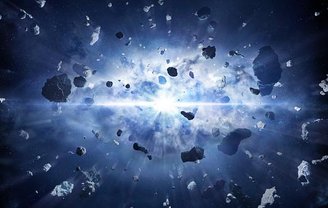A question recently published in the Curious Kids section of the science communication site The Conversation addressed a topic that many adults must have already asked themselves. “If James Webb’s telescope [JWST] “If it were 10 times stronger, could we see the beginning of time?” – A 12-year-old teenager asked.
Responding to the Texas boy, astronomer and astrophysicist Adi Ford, a professor at the University of Maryland in the US, said JWST was designed more than 25 years ago and launched at Christmas 2021 to have a relatively unobstructed view. Universe. From your destination, 1.5 million kilometers from Earth, Yes, it can look back into the universe’s history going back about 13.5 billion years..
This is because, like any telescope, the international space observatory (the result of a partnership between NASA, ESA and CSA) does not show stars, galaxies and exoplanets as they are now. In fact, what astronomers see are reflections of past light from these cosmic objects and structures.
Journey of ancient starlight through telescopes
“Light takes time to travel through space and reach our telescopes. Essentially this means looking into space is also time travel“, explains Ford. This is true for small and large distances. For example, the light from the Sun we see left the star’s surface about 8 minutes and 20 seconds ago.
This is because the speed of light in vacuum (300,000 kilometers per second) is a fundamental universal constant of nature. As a result, the further away the light source is, the longer it takes to reach us. That’s why the light we see from Proxima Centauri, the closest star to the Earth after the Sun, takes 4 years to reach here after traveling approximately 40 trillion kilometers.
In August 2022, JWST photographed Earendel, considered the most distant star ever observed, It is almost 28 billion light years away. This means that the light from this star seen by the space telescope is about 12.9 billion years old, meaning it was in the early stages of the universe, shortly after the Big Bang.
After all, could JWST photograph the Big Bang at the beginning of the Universe?

We know that it is possible to photograph the beginning of time in the universe. When it comes to photographing the Big Bang, the term scientists use to describe the beginning of the universe causes some confusion. Although it is the most accepted theory by physicists, the term is a form of false advertising since the Big Bang was not a large explosion.
According to Ford, the Big Bang “more accurately represents the emergence of space rapidly expanding throughout the universe.” But this does not mean that the Big Bang caused this expansion or that it started at a single “photographically recordable” point.but it began to occur simultaneously throughout the observable universe.
In this sense, JWST was not designed to photograph the Big Bang, and even if it were, it would only be able to observe the period when the first objects began to emit light. Before this time, there was no infrared radiation that could be collected and focused by space telescope mirrors.
Is there currently a way to record the Big Bang?

According to Ford, looking back to a period close to the Big Bang is not just about having a bigger mirror. According to the astronomer, this has been attempted since the late 1980s, when space agencies sent satellites such as COBE, WMAP and Planck into space. Its mission was to observe microwave emissions shortly after the first cosmic expansion..
However, it is important to emphasize that cosmic microwave radiation (RCMF) is not visible light, but a type of electromagnetic radiation that merely makes a thermal record of the time when the Universe was still very hot and dense, recorded as radio waves.
Therefore, the fact that JWST observes the universe only a few hundred million years after the Big Bang does not represent a limitation of the instrument. The telescope’s mission is to capture an exact reflection, albeit a small one, of where the first light from stars and galaxies is expected to emerge.
Is there anything you want to ask? Tell us on our social networks and get the opportunity to share the article with your friends who love astronomy. Until later!
Source: Tec Mundo
I’m Blaine Morgan, an experienced journalist and writer with over 8 years of experience in the tech industry. My expertise lies in writing about technology news and trends, covering everything from cutting-edge gadgets to emerging software developments. I’ve written for several leading publications including Gadget Onus where I am an author.













